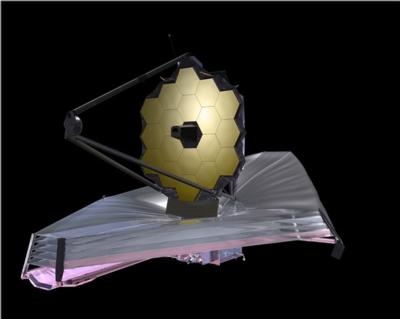Integration Of The Various Spacecraft Elements Taking Longer Than Expected, NASA Says
NASA’s James Webb Space Telescope now is planning to launch between March and June 2019 from French Guiana, following a schedule assessment of the remaining integration and test activities. Previously Webb was targeted to launch in October 2018.

“The change in launch timing is not indicative of hardware or technical performance concerns,” said Thomas Zurbuchen, associate administrator for NASA’s Science Mission Directorate at Headquarters in Washington. “Rather, the integration of the various spacecraft elements is taking longer than expected.”
As part of an international agreement with the ESA (European Space Agency) to provide a desired launch window one year prior to launch, NASA recently performed a routine schedule assessment to ensure launch preparedness and determined a launch schedule change was necessary. The careful analysis took into account the remaining tasks that needed to be completed, the lessons learned from unique environmental testing of the telescope and science instruments at NASA’s Goddard Space Flight Center in Greenbelt, Maryland, and the current performance rates of integrating the spacecraft element.
Testing of the telescope and science instruments continues to go well and on schedule at NASA’s Johnson Space Center in Houston, Texas. The spacecraft itself, comprised of the spacecraft bus and sunshield, has experienced delays during its integration and testing at Northrop Grumman in Redondo Beach, California.
The additional environmental testing time of the fully assembled observatory--the telescope and the spacecraft--will ensure that Webb will be fully tested before launching into space. All the rigorous tests of the telescope and the spacecraft to date show the mission is meeting its required performance levels.
Existing program budget accommodates the change in launch date, and the change will not affect planned science observations.
“Webb’s spacecraft and sunshield are larger and more complex than most spacecraft. The combination of some integration activities taking longer than initially planned, such as the installation of more than 100 sunshield membrane release devices, factoring in lessons learned from earlier testing, like longer time spans for vibration testing, has meant the integration and testing process is just taking longer,” said Eric Smith, program director for the James Webb Space Telescope at NASA Headquarters in Washington. “Considering the investment NASA has made, and the good performance to date, we want to proceed very systematically through these tests to be ready for a Spring 2019 launch.”
The launch window request has been coordinated with ESA, which is providing the Ariane 5 launch of Webb as part of its scientific collaboration with NASA.
The James Webb Space Telescope is NASA’s next great multi-purpose observatory and will be the world’s most powerful space telescope ever built, serving thousands of astronomers worldwide. The 21-foot diameter infrared-optimized telescope is designed to study an extremely wide range of astrophysical phenomena: the first stars and galaxies that formed; the atmospheres of nearby planets outside our solar system, known as exoplanets; and objects within our own solar system. Webb is an international project led by NASA with its partners ESA and the Canadian Space Agency.
(Source: NASA news release. Image from file)
 Aero-News: Quote of the Day (12.18.25)
Aero-News: Quote of the Day (12.18.25) Classic Aero-TV: Viking Twin Otter 400--Bringing the DHC-6 Back Into Production
Classic Aero-TV: Viking Twin Otter 400--Bringing the DHC-6 Back Into Production NTSB Final Report: Rans Employee Flying Club Rans S-6ES Coyote II
NTSB Final Report: Rans Employee Flying Club Rans S-6ES Coyote II ANN FAQ: Submit a News Story!
ANN FAQ: Submit a News Story! ANN's Daily Aero-Term (12.18.25): Braking Action Advisories
ANN's Daily Aero-Term (12.18.25): Braking Action Advisories



